Literature-Based, Project-Based Ideas for an Elementary Astronomy Unit Study
The study of astronomy with my seven and 10-year-old children was surprisingly fascinating! As usual, we used bits and pieces of this and that, with lots of living literature, a field trip, and projects, to learn about our solar system. I hope you find something helpful to add to your astronomy unit study!
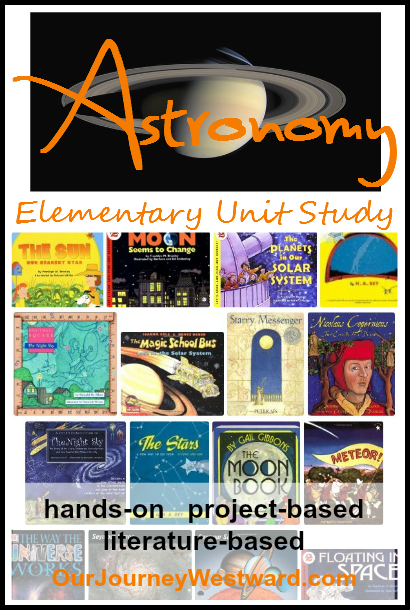
This post contains affiliate links.
Elementary Astronomy Unit Study
Exploring Creation With Astronomy was our main teaching text. We didn’t complete every single chapter, but the ones we did were top-notch.
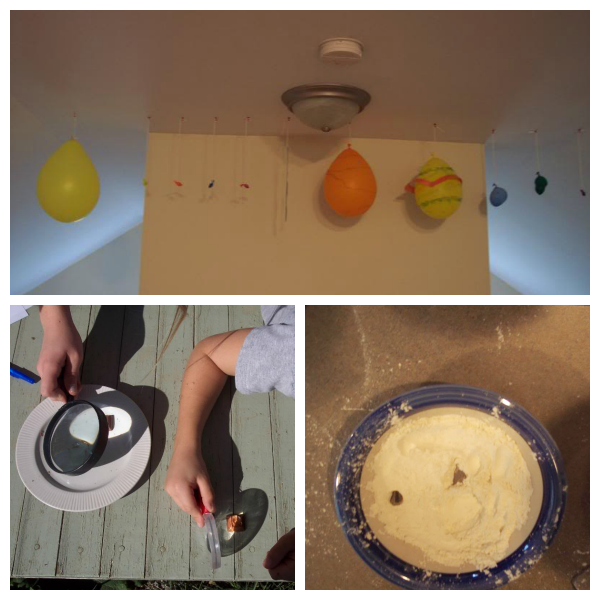
{balloon solar system model; the sun’s power to melt chocolate; moon crater simulation}
Beyond the text, I added a few lapbooking activities and many hands-on projects. All the paperwork was put into modified lapbooks. Mini-books were glued on the first flap, while notebooking pages and worksheets were stapled together at the top of the other flap.
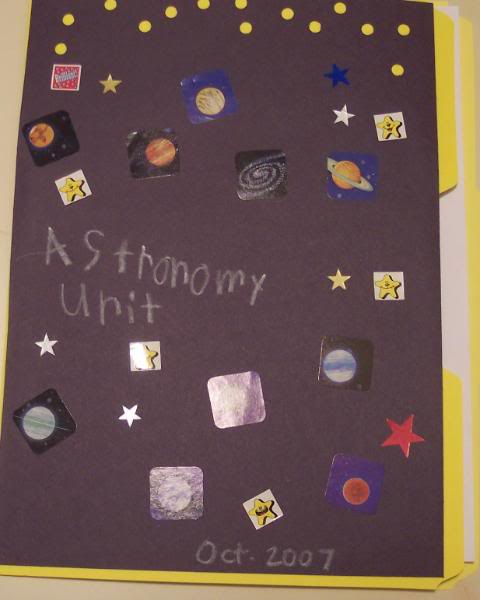
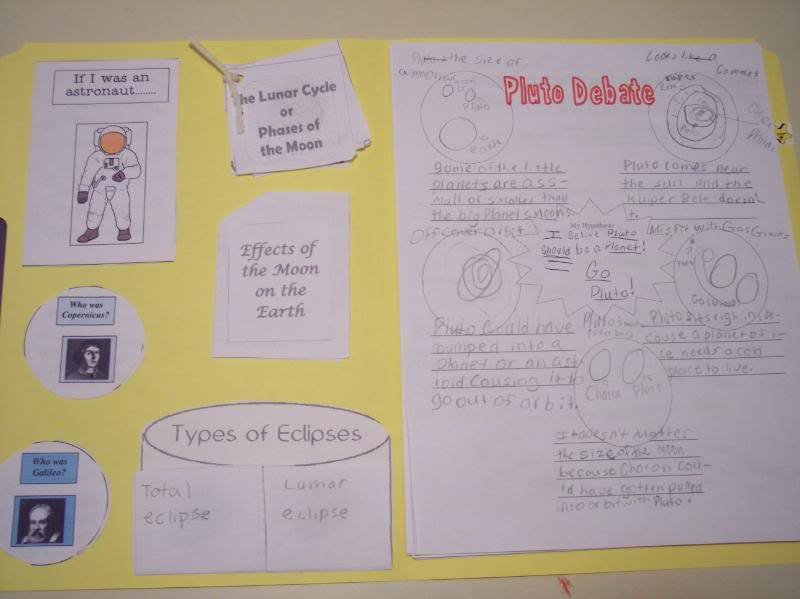
This unit study happened before the creation of Pinterest, so none of the hands-on activities shown below came from my astronomy Pinterest board. However, now you can find plenty of great hands-on additions for any astronomy unit.

{eating in space simulation; dehydrated food tasting; objects in space simulation; space station aim game}

{Oreo moon phases model}
The Living Books
Of course, living books were a big part of the learning!
The Extra Learning
The Creation Museum has a WONDERFUL planetarium – both informative and God-honoring. This museum is ALWAYS worth our drive for a field trip.
We found a few fun website games the kids enjoyed during their free time.
The Final Projects
All our unit studies end with final projects – otherwise known as project-based learning. The kids spent a few days preparing their projects before presenting them in front of the video camera. They were asked to choose whatever astronomy topic that most interested them and show about that topic in whatever exciting ways they liked. I don’t always give them this much freedom in project choice, but they did a GREAT job pulling together demonstrations, models, and speeches.
Caleb chose astronauts for his topic. The presentation discussed astronaut suits (see his helmet and jet pack?), space shuttles, rockets, Neil Armstrong and Buzz Aldrin, dehydrated food, and thrust.
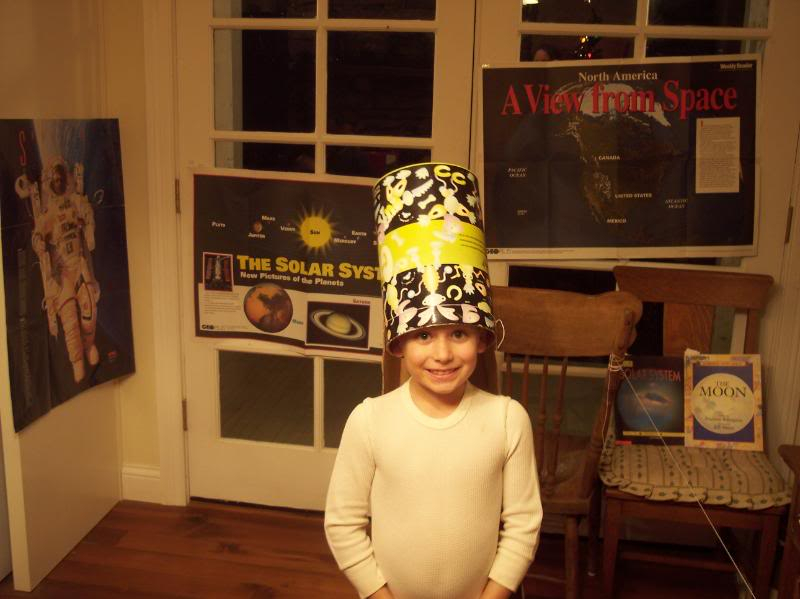
Mahayla’s presentation was on the topic of stars. It included information about the sun, other notable stars, constellations, how to use an astronometer to tell the brightness of stars, and some information about light years.
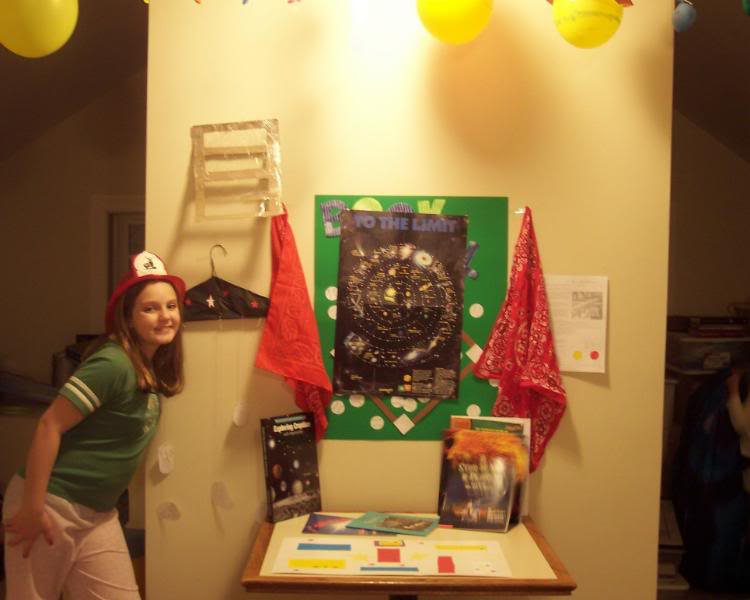
Unit studies make GREAT memories. They can be a little more time-intensive for mom to plan, but the effort has always been worth it in our homeschool.
Please feel free to share links to your astronomy units in the comments!
Want to learn more about Space? Check out this fantastic Space Observations curriculum!
When I first created our astronomy unit study, I wanted to give my children a hands-on, engaging way to explore the wonders of space. Since then, I’ve developed the Space Observations curriculum so families can enjoy astronomy through nature study.
While this curriculum wasn’t originally part of our unit study, it builds on the same principles of discovery and creative learning that made our study so effective. Whether you’re just starting your space unit or looking for an enriching resource to complement your lessons, Space Observations provides a structured yet flexible way to explore space science with your children.
-
 Space Observations$20.00
Space Observations$20.00
About Space Observations
Designed for 1st-8th graders, Space Observations invites your entire family to soar into the topic of space through nature journaling, hands-on experiences, research projects, and curated video content.
With eight exciting lessons covering everything from the sun and moon to constellations and comets, this curriculum makes it easy to observe and understand space—even from indoors! Children will strengthen their scientific thinking by exploring essential concepts like chemical and physical reactions, surface tension, and more through simple experiments.
The curriculum is open and go, with flexible activities to fit your family’s needs. Whether you use it as a stand-alone resource or as part of a broader unit study, Space Observations brings space science to life in a meaningful and fun way!

















Wow! What a great list of resources. I would like to study the Solar System in January. We will be using this post as our guide 🙂
I’m glad the post was helpful, Channon! 🙂
This is our first year homeschooling and I am trying to put a unit together but didn’t know where to start. This was a big help and looks like a lot of fun. 🙂
Oh, that makes me so happy to hear, Amy! Blessings on your first year. You can do it!
Thank you SO much for sharing this. I’ve been trying to find a list of living books for our space unit study. This is exactly what I was looking for! I stumbled upon it and just ordered every single book from my library. Thank you so much for taking the time to put this together. I’m looking forward to trying some of the activities on your pinterest board as well– I think we definitely need to do the oreo moon phases 😉
Ooh, the Oreo moon phases activity is unforgettable! Enjoy the books, too! 🙂